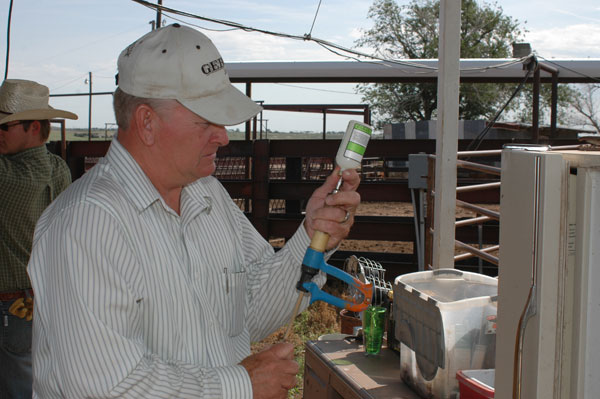September 15, 2016

Change is coming, but it is nothing new — we face it every day. The use of antibiotics in food animal production has garnered a great deal of attention. We can debate the science of antimicrobial resistance and bemoan more government oversight, but the fact remains: We will see some major changes in how antibiotics are used.
We are past the time to lament how things used to be done. We must accept the task before us, pull on our boots and get after it. Not only will the Veterinary Feed Directive (VFD) come into effect on Jan. 1, 2017, but we will most likely see many over-the-counter injectable products become prescription in the near future as well.
Regarding the VFD, please get together with your herd health veterinarian and feed distributor, and go through the process of acquiring and using feed with a VFD component. When your cattle are getting sick is not the time to learn how to acquire a VFD feed.

70+ photos showcasing all types of cattle nutrition
Readers share their favorite photos of cattle grazing or steers bellied up to the feedbunk. See reader favorite nutrition photos here.
As the antibiotic dialogue continues, we are seeing more and more proteins offered that are antibiotic-free. Several major retailers and restaurants have started to offer antibiotic-free products, or have indicated they will offer those options soon. Of course, antibiotic-free products have been available for years, but some purveyors are now offering only antibiotic-free products.
More power to them! If the consumer wants it and is willing to pay for it, then I think we should provide it. It is a very poor business model that responds to its consumers’ wishes with, “You will take what I give you.” The only time I have a problem with these specialty or niche markets is when their benefits are oversold, or the conventionally produced meats are maligned with no scientific basis.
Our consumers (and our government) have clearly indicated that antibiotic use must be reduced — not only in regard to food production, but in human medicine as well. I choose to say “reduced” rather than “used more judiciously,” because there does not appear to be any mutually agreeable mechanism to measure the outcome. What metric do we use to determine that a reduction in antibiotic use is truly a success?
This should be very concerning to all of us, because simply being able to say that antibiotic use has been reduced doesn’t necessarily tell the whole story. If we reduce antibiotic use to the detriment of food safety, animal health or animal welfare, is it a success? I agree that we can do better as far as antibiotic use is concerned, but we must be very careful to examine the big picture.
A mentor of mine imparted a philosophy that I have tried to apply every day of my career: “Whenever we use an antibiotic, it is an indication that we have a failure in management.” When I speak to producer and veterinary groups, I often ask how many agree with this statement. More often than not, only a few hands go up. Then, I follow that statement with, “If we managed our cattle better, we could reduce our antibiotic use,” and ask how many agree. Every hand goes up.
These two statements mean about the same thing, except they are stated a little differently. But they don’t mean the manager is a failure. They simply mean that better management may have resulted in not having to use an antibiotic.
It is commonly stated that the definition of insanity is to keep doing something the same way, and expecting different results. If we want different results, we will have to make some changes. What can we change to better manage our cattle so we can use antibiotics less frequently?
Change can be difficult, so you must want it more than you dread it. Please see your herd health veterinarian for advice on better practices that can help you reduce antibiotic use.
Dave Sjeklocha, DVM, is operations manager of animal health and welfare for Cattle Empire LLC of Satanta, Kan. He can be reached at [email protected].
You might also like:
Young ranchers, listen up: 8 tips from an old-timer on how to succeed in ranching
13 utility tractors that will boost efficiency in 2016
Burke Teichert: How to cull the right cow without keeping records
3 weaning methods compared; Which one rises to the top?
6 tips for proper electric fence grounding
9 things to include in your ag lease (that you better have in writing!)
About the Author(s)
You May Also Like



